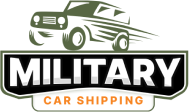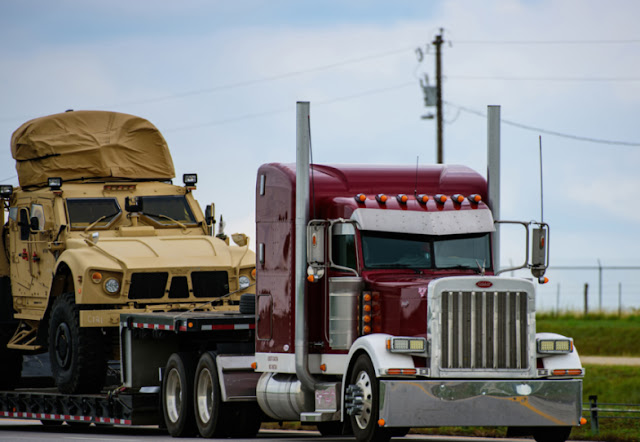Efficient Cross-Country Military Vehicle Shipping
Overview
Introduction
In the world of military logistics, the efficient shipping of cross-country military vehicles plays a crucial role in ensuring the effectiveness and readiness of armed forces. The transportation of these heavy and specialized vehicles requires careful planning, coordination, and expertise to navigate the challenges posed by various terrains, weather conditions, and logistical constraints. This article aims to explore the key considerations and strategies involved in the efficient cross-country shipping of military vehicles, highlighting the importance of effective logistics in maintaining military capabilities and operational readiness.
Importance of efficient military vehicle shipping
Efficient military vehicle shipping plays a crucial role in ensuring the readiness and effectiveness of armed forces. The timely and secure transportation of military vehicles is essential for maintaining a strong defense capability and supporting military operations. A well-organized and efficient shipping process helps to minimize delays, reduce costs, and optimize resource allocation. It enables the rapid deployment of vehicles to different locations, allowing for quick response in times of emergency or conflict. Furthermore, efficient military vehicle shipping enhances interoperability among allied forces, facilitating joint exercises and missions. Overall, the importance of efficient military vehicle shipping cannot be overstated, as it directly impacts the operational capability and preparedness of military forces.
Challenges in cross-country military vehicle shipping
Cross-country military vehicle shipping poses several challenges that need to be addressed. One of the main challenges is the logistical complexity involved in transporting large and heavy military vehicles across different terrains and environments. These vehicles require specialized handling and transportation methods to ensure their safety and integrity throughout the shipping process. Additionally, the diverse regulations and customs procedures of different countries can present obstacles to the smooth movement of military vehicles. It is crucial to navigate through these challenges effectively to ensure the efficient and timely delivery of military vehicles to their intended destinations.
Planning and Preparation
Determining transportation requirements
Determining transportation requirements is a crucial step in the efficient cross-country military vehicle shipping process. It involves assessing the number of vehicles to be transported, their size and weight, as well as any special handling or security requirements. Additionally, factors such as the distance to be covered, the available transportation options, and the timeline for delivery need to be considered. By accurately determining the transportation requirements, military organizations can ensure the smooth and timely delivery of their vehicles to the desired locations.
Route selection and analysis
Route selection and analysis a crucial aspects of efficient cross-country military vehicle shipping. It involves careful evaluation of various factors such as terrain, distance, infrastructure, and security. The goal is to identify the most optimal route that minimizes risks, reduces travel time, and ensures the safe transportation of military vehicles. Through thorough analysis and planning, military logistics experts can determine the best route that meets the specific requirements of the mission while considering potential challenges and obstacles along the way. By selecting the right route, military organizations can enhance their operational efficiency and effectively transport vehicles to their desired destinations.
Securing necessary permits and documentation
Securing necessary permits and documentation is a crucial step in the process of cross-country military vehicle shipping. Before transporting military vehicles, it is essential to obtain the required permits and documentation to ensure compliance with legal and regulatory requirements. This includes obtaining permits from relevant government agencies and completing necessary paperwork, such as customs forms and shipping manifests. Additionally, it may be necessary to provide proof of ownership or authorization to transport the vehicles. By securing the necessary permits and documentation, the shipping process can proceed smoothly and without any legal complications.
Vehicle Preparation
Inspection and maintenance
Inspection and maintenance play a crucial role in ensuring the efficiency and reliability of cross-country military vehicle shipping. Before any vehicle is transported, it goes through a thorough inspection process to identify any potential issues or damages. This includes checking the engine, brakes, tires, and other essential components. Regular maintenance is also carried out to address any wear and tear and prevent any major breakdowns during the shipping process. Additionally, proper lubrication and fluid checks are performed to ensure optimal performance. By conducting regular inspections and maintenance, the military can ensure that their vehicles are in top condition and ready for any cross-country transportation mission.
Securing loose items
Securing loose items is a crucial step in ensuring the safety and efficiency of cross-country military vehicle shipping. Loose items can pose significant risks during transportation, including damage to the vehicles and potential harm to the personnel involved. To prevent these risks, it is essential to properly secure all loose items before the shipment. This can be done by using appropriate restraints, such as straps or tie-downs, to secure the items tightly in place. Additionally, padding and cushioning materials should be used to protect the vehicles and prevent any movement or shifting of the items. By taking these measures, the chances of accidents or damage during transit can be greatly reduced, ensuring a smooth and successful military vehicle shipping process.
Fuel and fluid management
Fuel and fluid management is a crucial aspect of efficient cross-country military vehicle shipping. Properly managing fuel and fluid levels ensures that vehicles have the necessary resources to complete their journeys without any disruptions. This includes monitoring fuel consumption, refueling at strategic intervals, and maintaining the appropriate fluid levels for optimal vehicle performance. Additionally, implementing effective fuel and fluid management practices helps to minimize the risk of vehicle breakdowns and ensures the safety and readiness of military personnel. By prioritizing fuel and fluid management, military organizations can enhance their operational capabilities and streamline the shipping process for cross-country deployments.
Loading and Securing
Choosing the appropriate loading equipment
Choosing appropriate loading equipment is crucial for efficient cross-country military vehicle shipping. The right equipment ensures that vehicles are securely loaded and transported without any damage. Factors such as the size, weight, and type of vehicles must be taken into consideration when selecting the appropriate loading equipment. This includes ramps, lifts, and tie-down systems that can safely accommodate the vehicles. Additionally, the loading equipment should be compatible with the transportation mode, whether it is by road, rail, or air. By carefully choosing the right loading equipment, military vehicles can be transported smoothly and efficiently across the country.
Proper vehicle positioning and securing
Proper vehicle positioning and securing is crucial when it comes to efficient cross-country military vehicle shipping. To ensure the safety of the vehicles during transportation, it is important to carefully position and secure them in the shipping containers or trailers. This involves using appropriate tie-downs, straps, and braces to prevent any movement or damage during transit. Additionally, proper weight distribution within the containers or trailers should be maintained to avoid any imbalance that could affect the stability of the vehicles. By following these procedures, the risk of accidents and damage to the vehicles can be minimized, resulting in a smooth and successful cross-country military vehicle shipping operation.
Ensuring weight distribution and balance
To ensure weight distribution and balance, it is crucial to carefully load the military vehicles onto the transport vehicles. This process involves strategically positioning the vehicles based on their weight and size. Heavier vehicles should be placed towards the center of the transport vehicle to maintain stability and prevent any potential tipping or imbalance. Additionally, proper securing mechanisms such as straps and tie-downs should be used to secure the vehicles in place during transit. By ensuring proper weight distribution and balance, the risk of accidents and damage to the vehicles can be minimized, allowing for efficient and safe cross-country military vehicle shipping.
Transportation Execution
Monitoring and tracking
Monitoring and tracking are crucial aspects of efficient cross-country military vehicle shipping. In order to ensure the safety and security of the vehicles, it is important to have a robust monitoring and tracking system in place. This system allows for real-time monitoring of the vehicles' location, speed, and condition. It also enables the tracking of the vehicles' movement and provides valuable data for route optimization and logistics planning. With a reliable monitoring and tracking system, military organizations can effectively manage their vehicle shipments and ensure timely delivery to the desired destination.
Adhering to safety regulations
When it comes to cross-country military vehicle shipping, adhering to safety regulations is of utmost importance. The transportation of military vehicles requires careful planning and execution to ensure the safety of the vehicles and personnel involved. From securing the vehicles properly to following specific protocols for loading and unloading, every step must be taken with precision and attention to detail. By adhering to safety regulations, the risk of accidents, damage, and injuries can be significantly reduced, allowing for a smooth and efficient transportation process. Additionally, strict adherence to safety regulations also helps to maintain the integrity and readiness of the military vehicles, ensuring that they arrive at their destination in optimal condition. Overall, prioritizing safety in cross-country military vehicle shipping is essential for the successful and secure transportation of these valuable assets.
Addressing unforeseen challenges
Addressing unforeseen challenges is crucial in the efficient cross-country military vehicle shipping process. As with any complex operation, there are bound to be unexpected obstacles that can hinder the smooth transportation of vehicles. It is essential to have a proactive approach in identifying and resolving these challenges to ensure timely and secure delivery. Factors such as adverse weather conditions, road closures, logistical issues, and mechanical failures can all pose significant challenges. By implementing robust contingency plans, maintaining open lines of communication, and leveraging advanced tracking technologies, these unforeseen challenges can be effectively managed, minimizing disruptions and maximizing the overall efficiency of the shipping process.
Conclusion
Summary of key points
Efficient cross-country military vehicle shipping is a crucial aspect of military operations. It involves transporting military vehicles from one location to another, ensuring their safe and timely delivery. There are several key points to consider when it comes to efficient cross-country military vehicle shipping. First, proper planning and coordination are essential to ensure the smooth execution of the shipping process. This includes determining the most suitable routes, scheduling transportation, and coordinating with relevant stakeholders. Second, the use of specialized equipment and vehicles is necessary to handle and transport military vehicles safely. This may include flatbed trucks, trailers, and cargo planes. Third, strict adherence to safety protocols is crucial to prevent any damage or loss during transit. This includes securing the vehicles properly, following speed limits, and conducting regular inspections. Overall, efficient cross-country military vehicle shipping plays a vital role in maintaining the readiness and effectiveness of military forces.
Importance of efficient cross-country military vehicle shipping
Efficient cross-country military vehicle shipping plays a crucial role in ensuring the readiness and effectiveness of military operations. The ability to transport military vehicles quickly and securely across long distances is essential for maintaining a strong defense force. By efficiently shipping these vehicles, military organizations can ensure that they are readily available for deployment, training exercises, and emergency situations. Additionally, efficient cross-country military vehicle shipping minimizes downtime and delays, allowing for timely response and strategic mobility. This is particularly important in scenarios where rapid deployment and maneuverability are critical for mission success. Overall, the importance of efficient cross-country military vehicle shipping cannot be overstated as it directly impacts the operational capabilities and preparedness of military forces.
Future advancements in military vehicle transportation
In the future, advancements in military vehicle transportation are expected to revolutionize the way cross-country shipping is conducted. With the rapid development of technology, new methods, and technologies will be introduced to enhance the efficiency and effectiveness of transporting military vehicles. One such advancement could be the use of autonomous vehicles specifically designed for military transportation. These vehicles would be equipped with advanced navigation systems and communication capabilities, allowing them to safely and securely transport military vehicles across long distances. Additionally, advancements in logistics and supply chain management will play a crucial role in streamlining the shipping process, reducing costs, and ensuring timely delivery. Overall, the future holds great promise for the improvement of cross-country military vehicle shipping, making it faster, safer, and more efficient than ever before.






Comments
Post a Comment